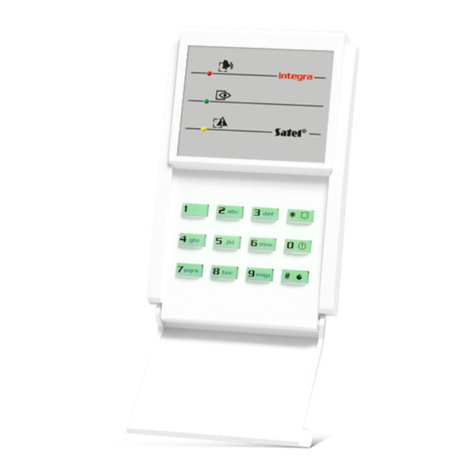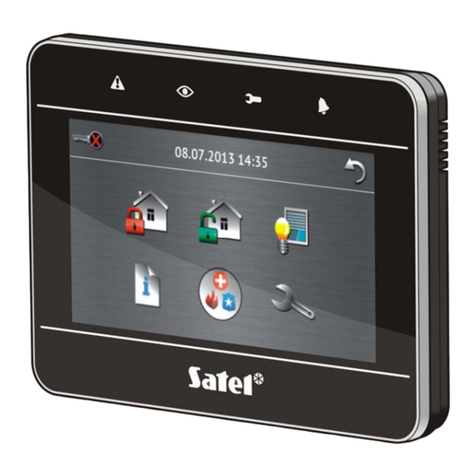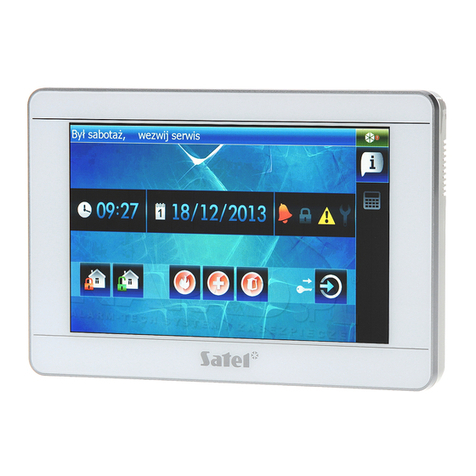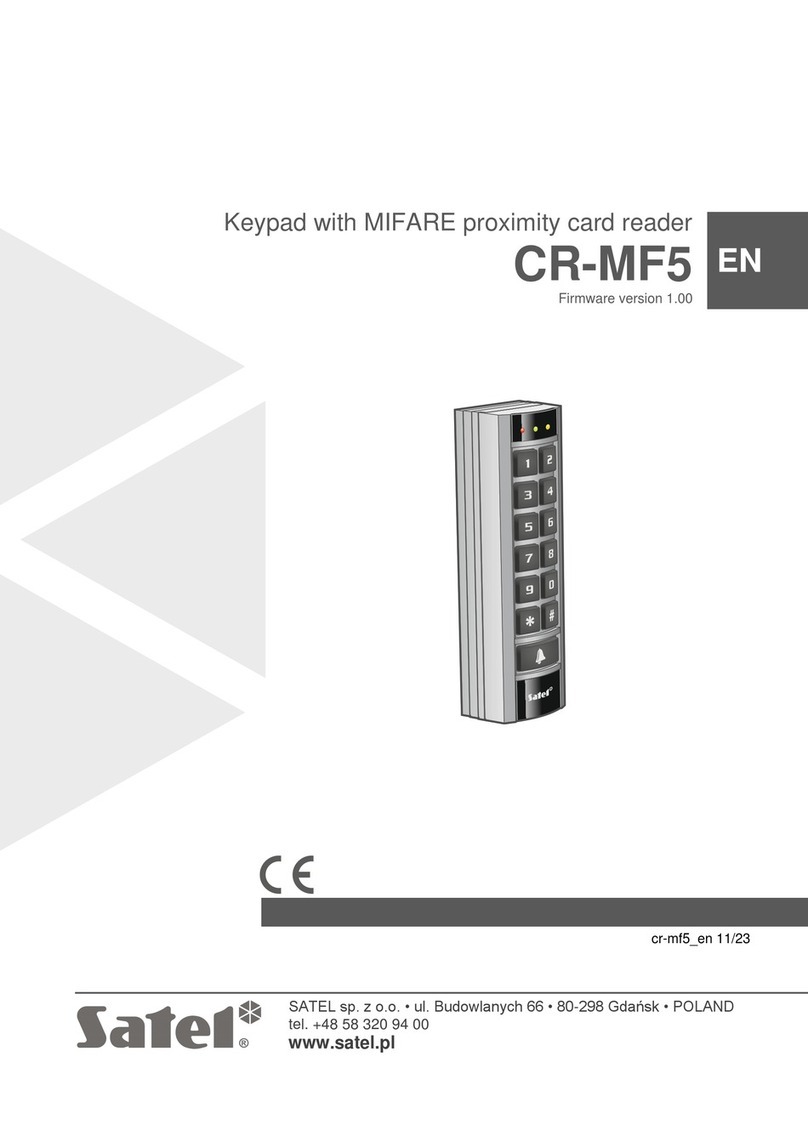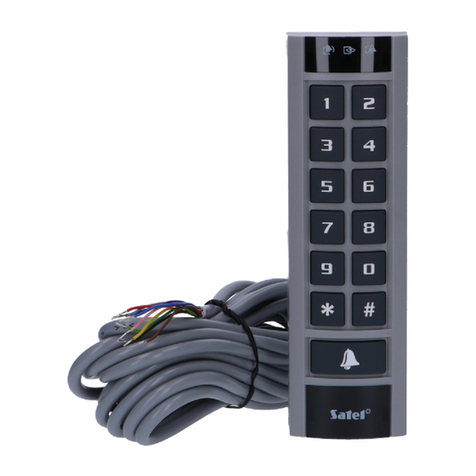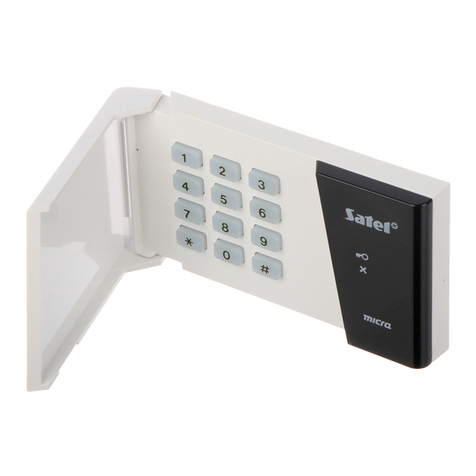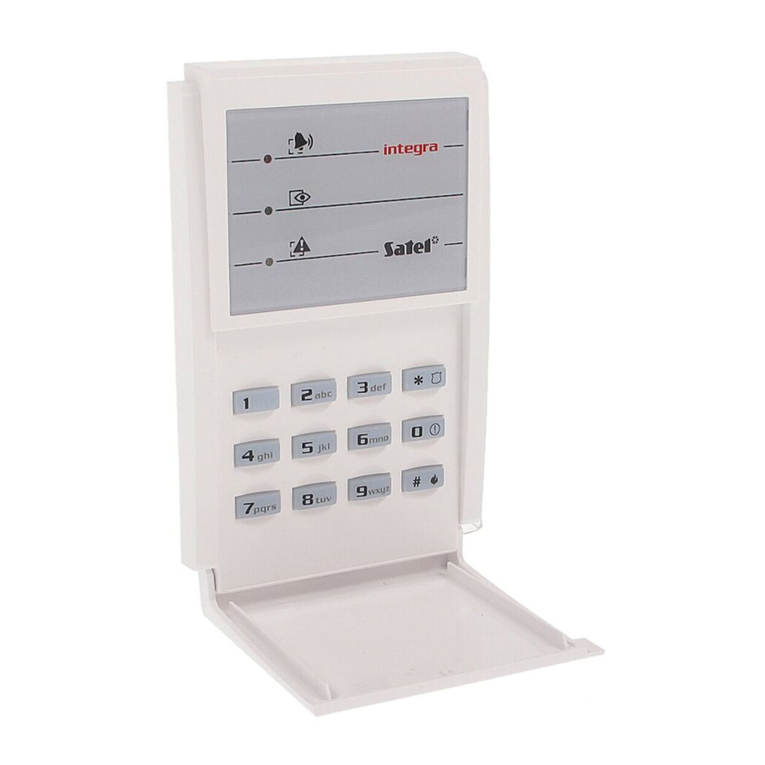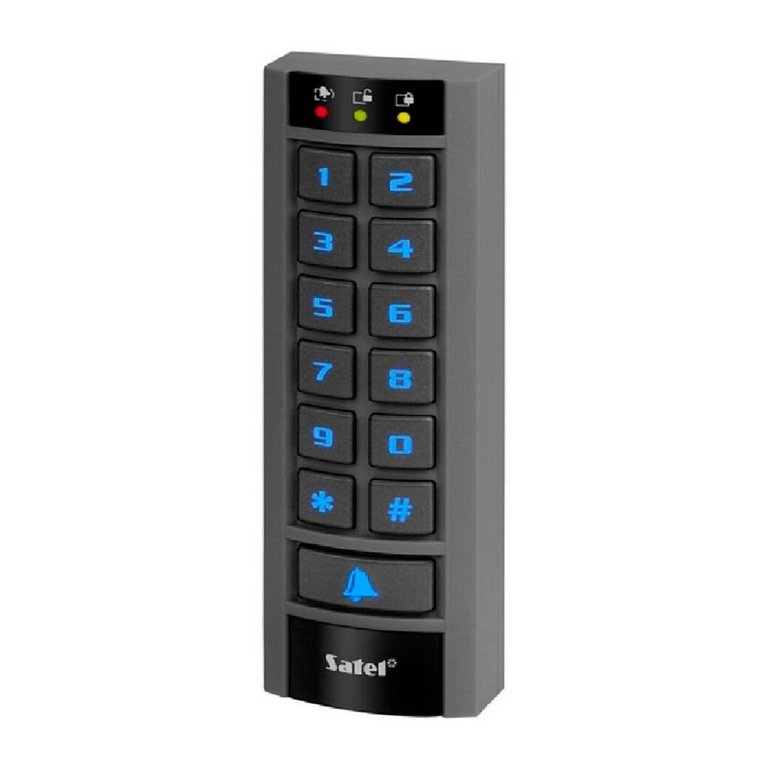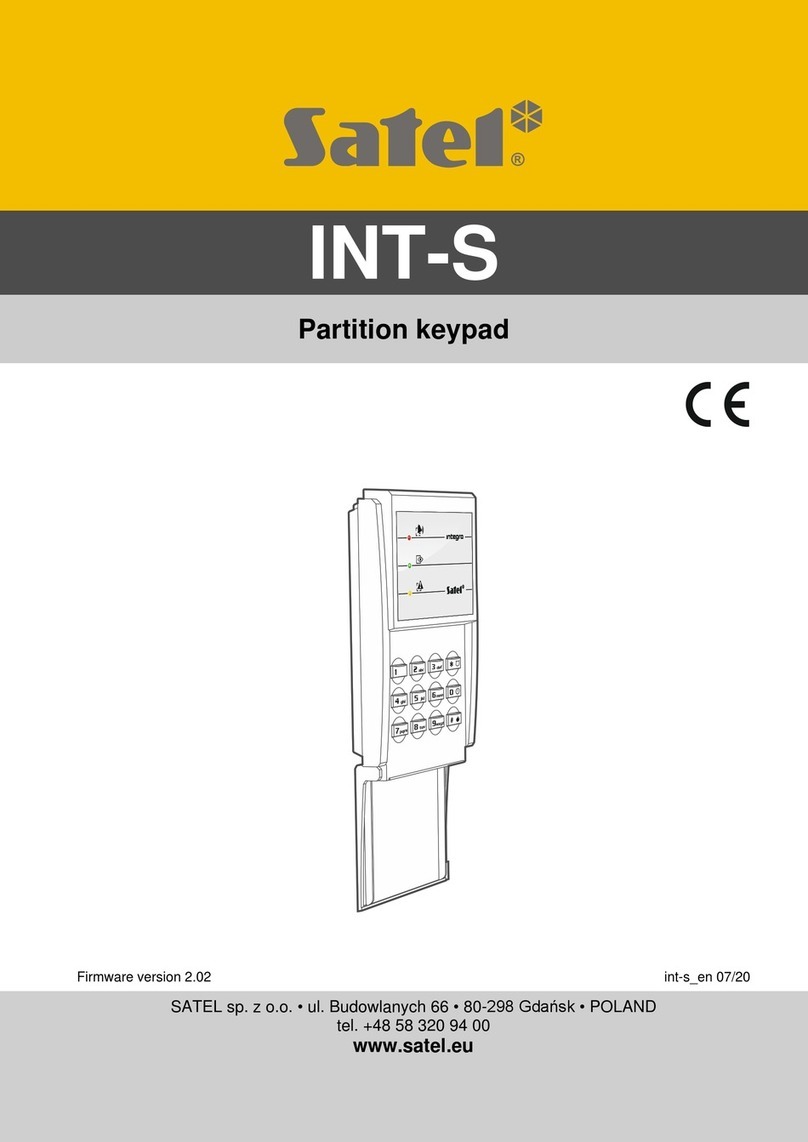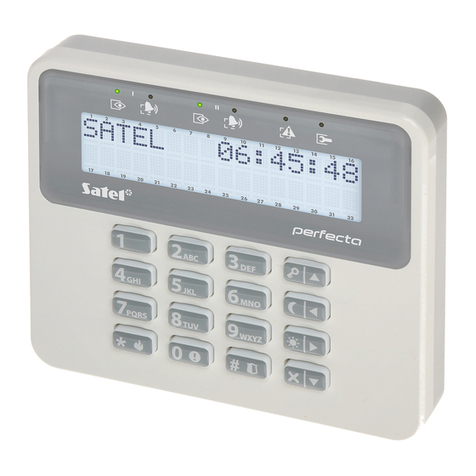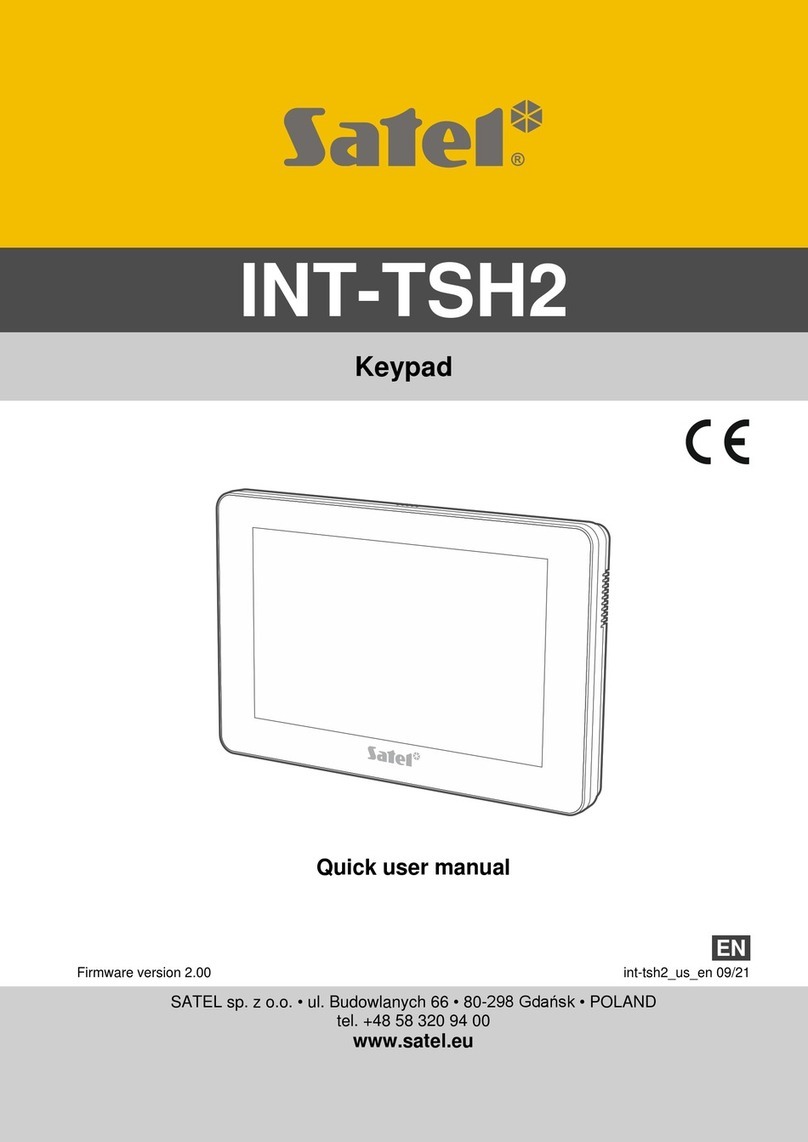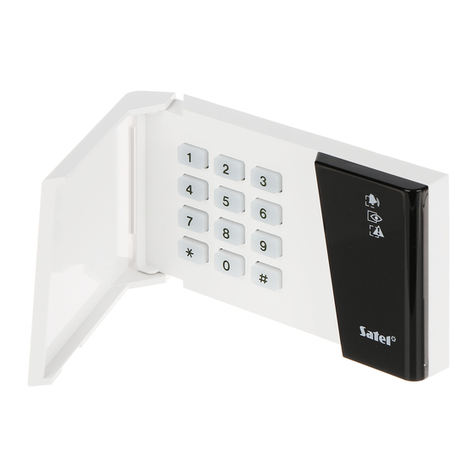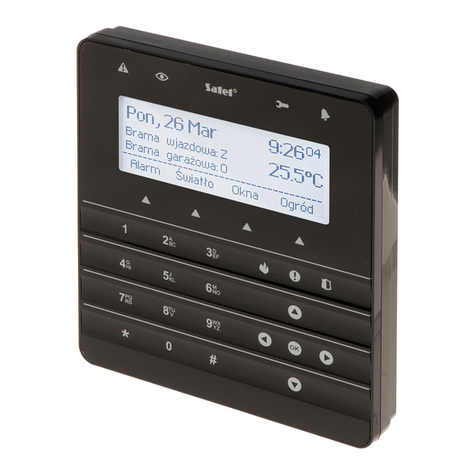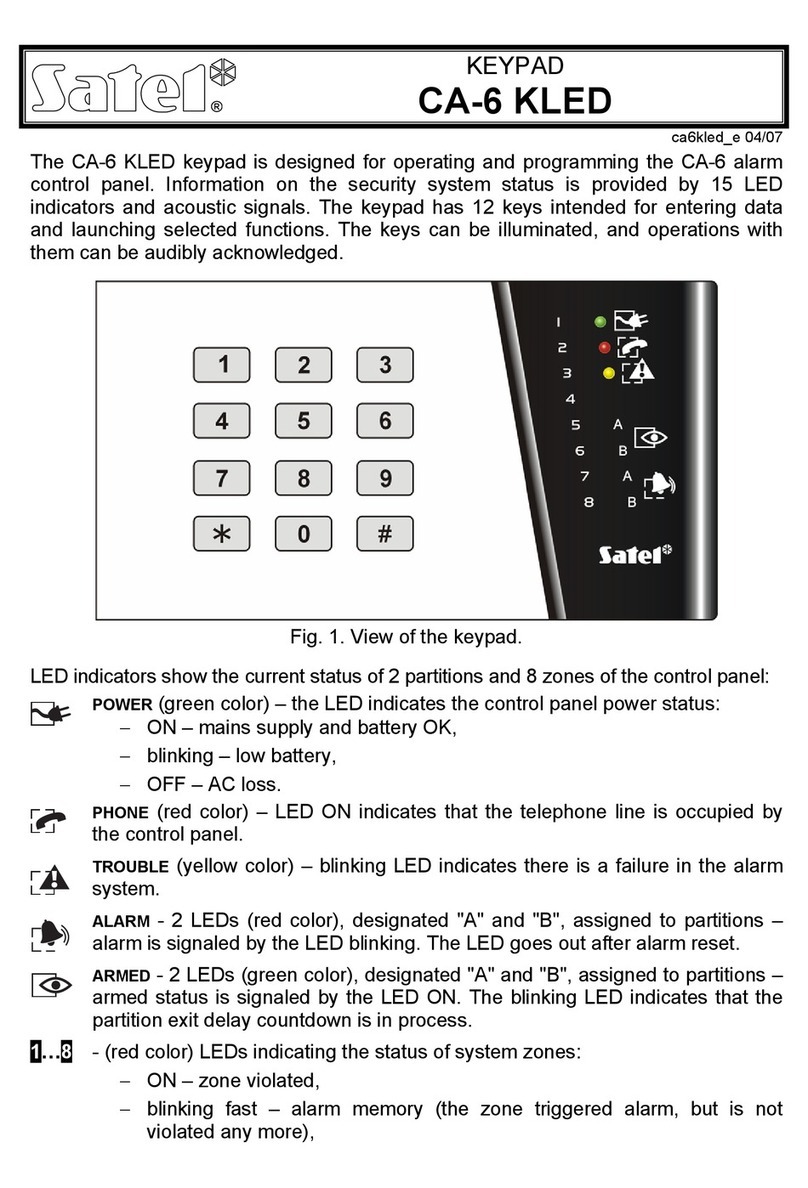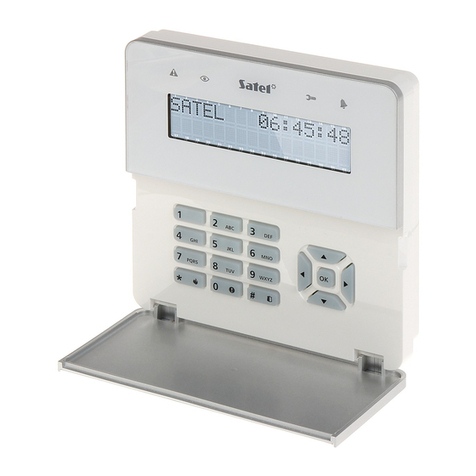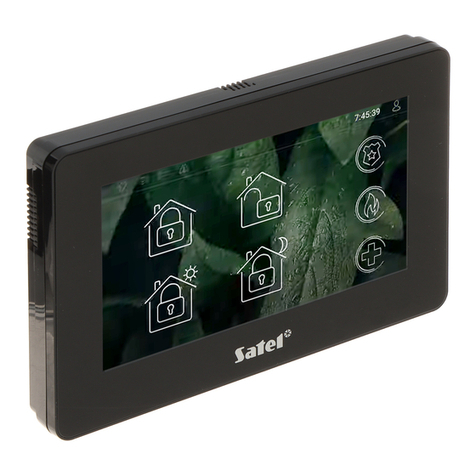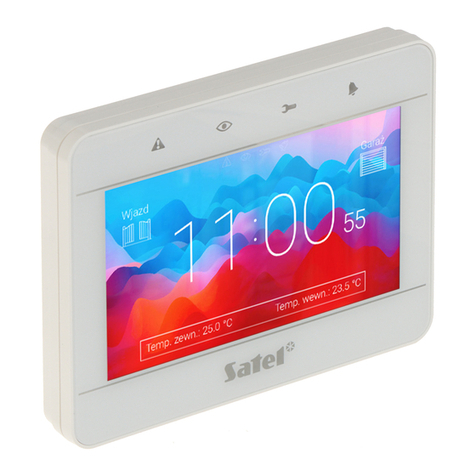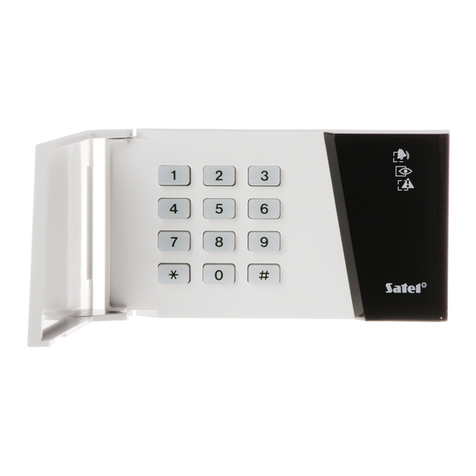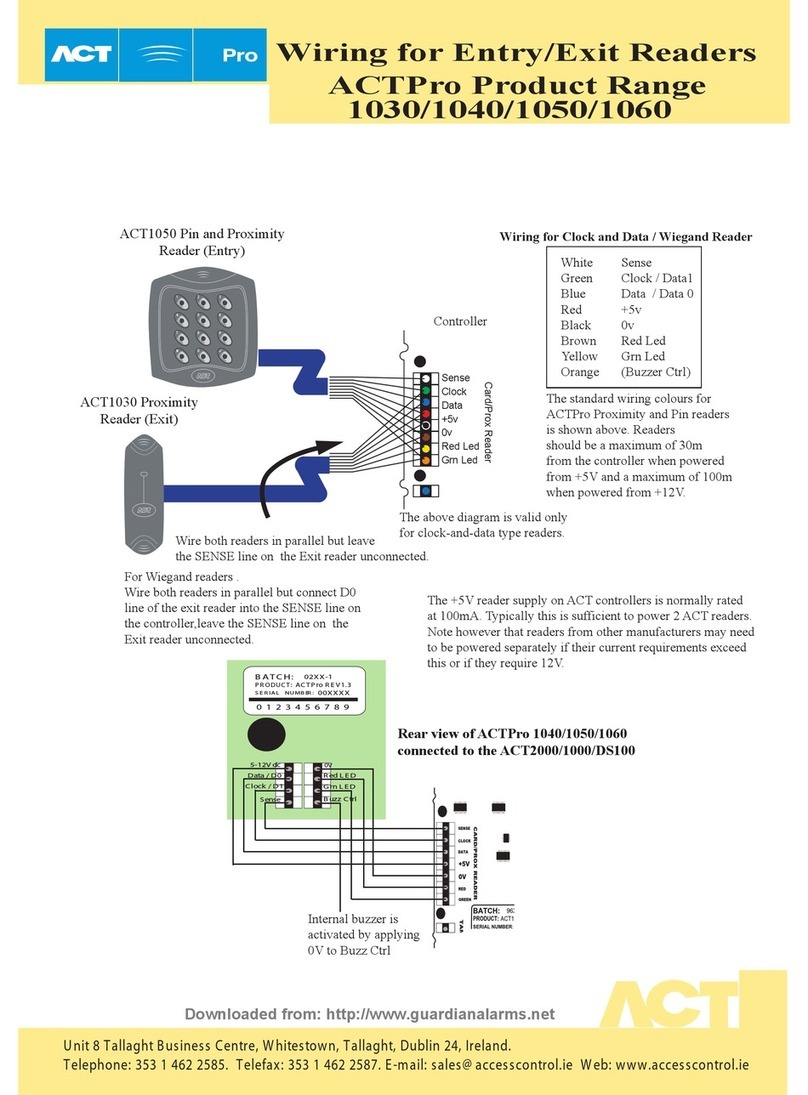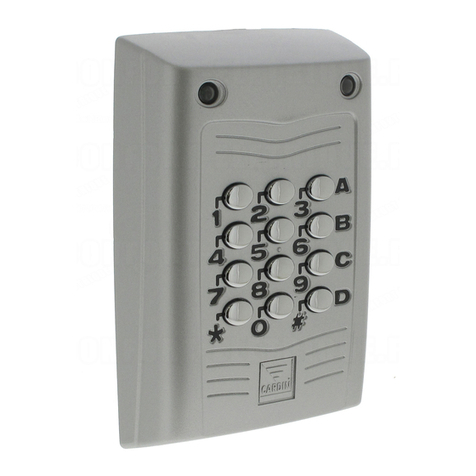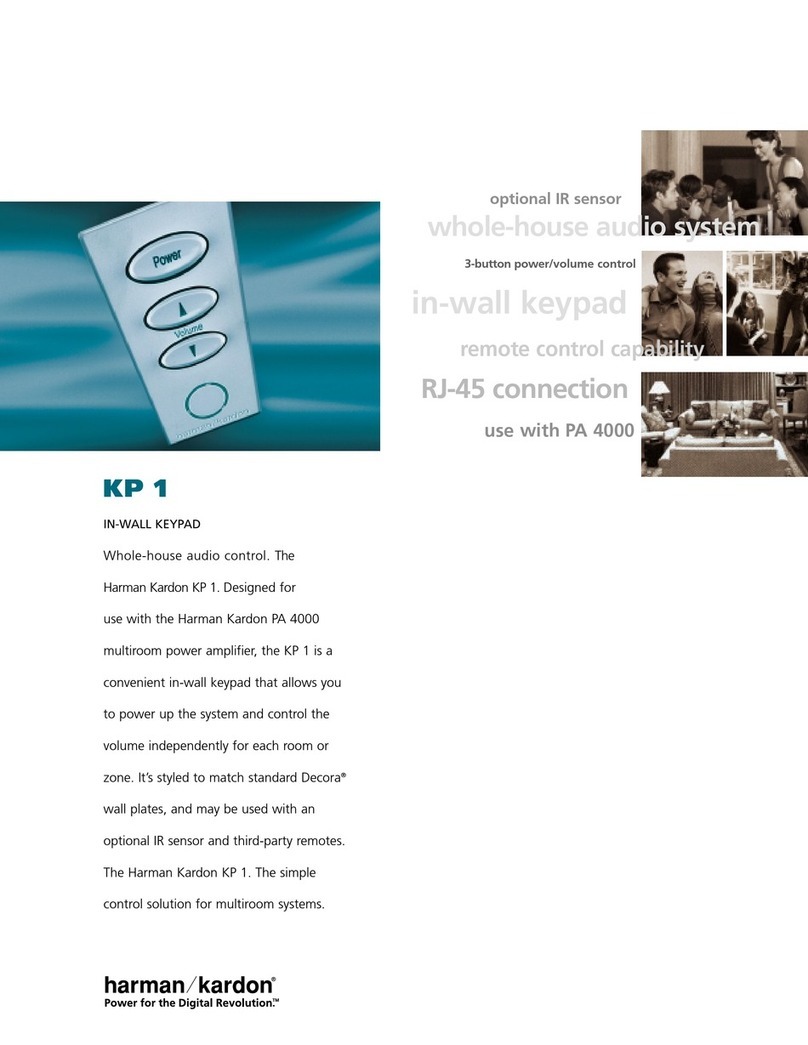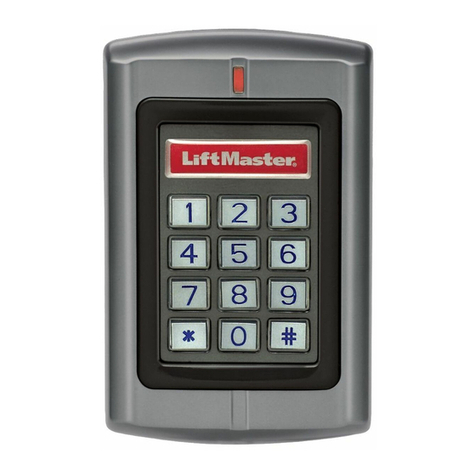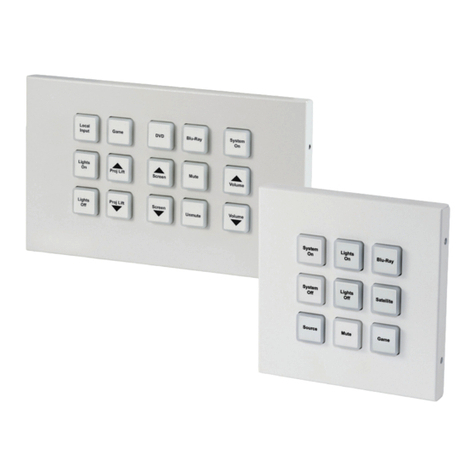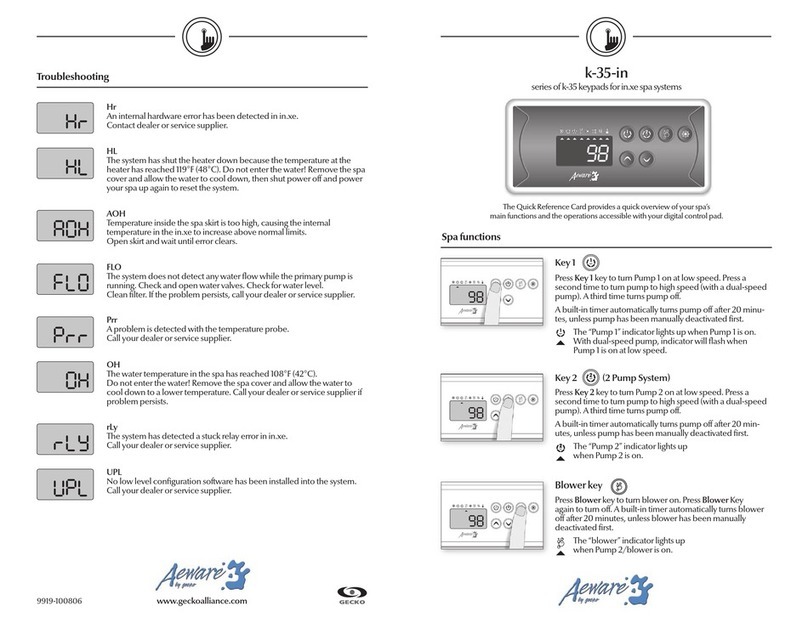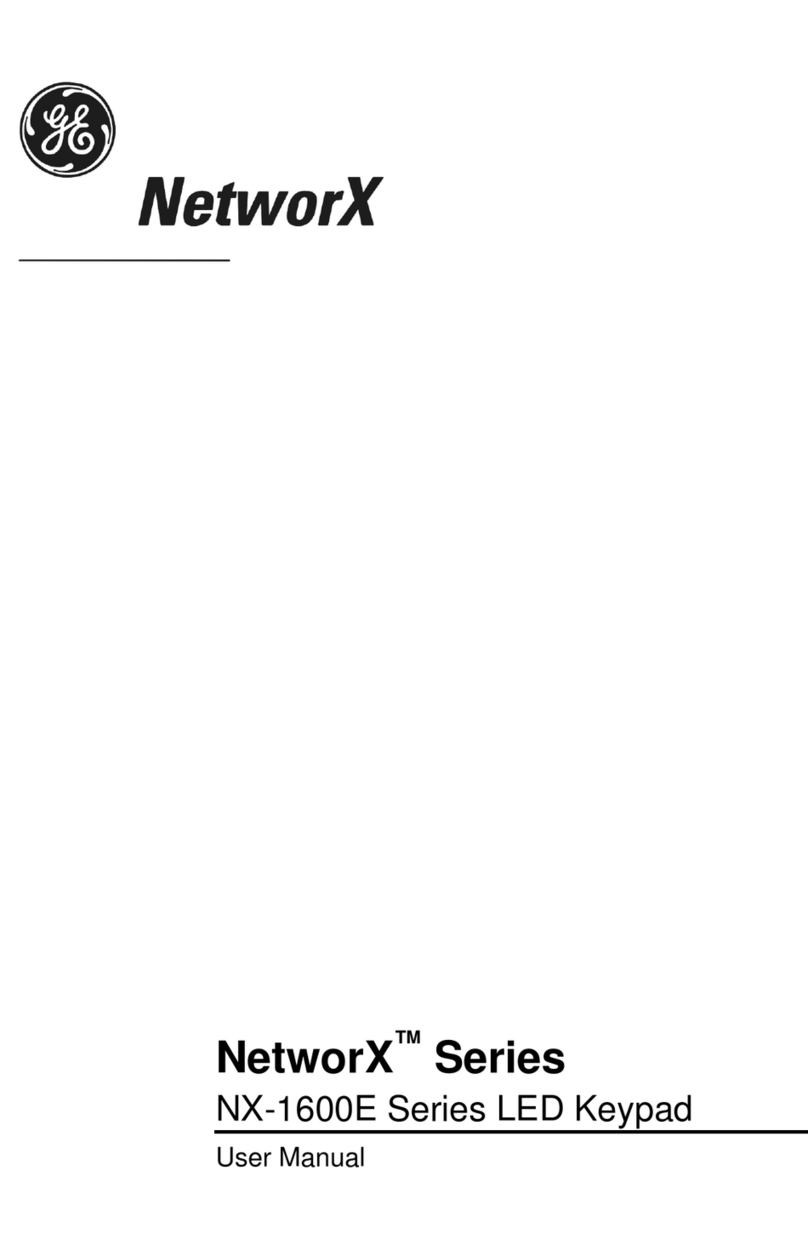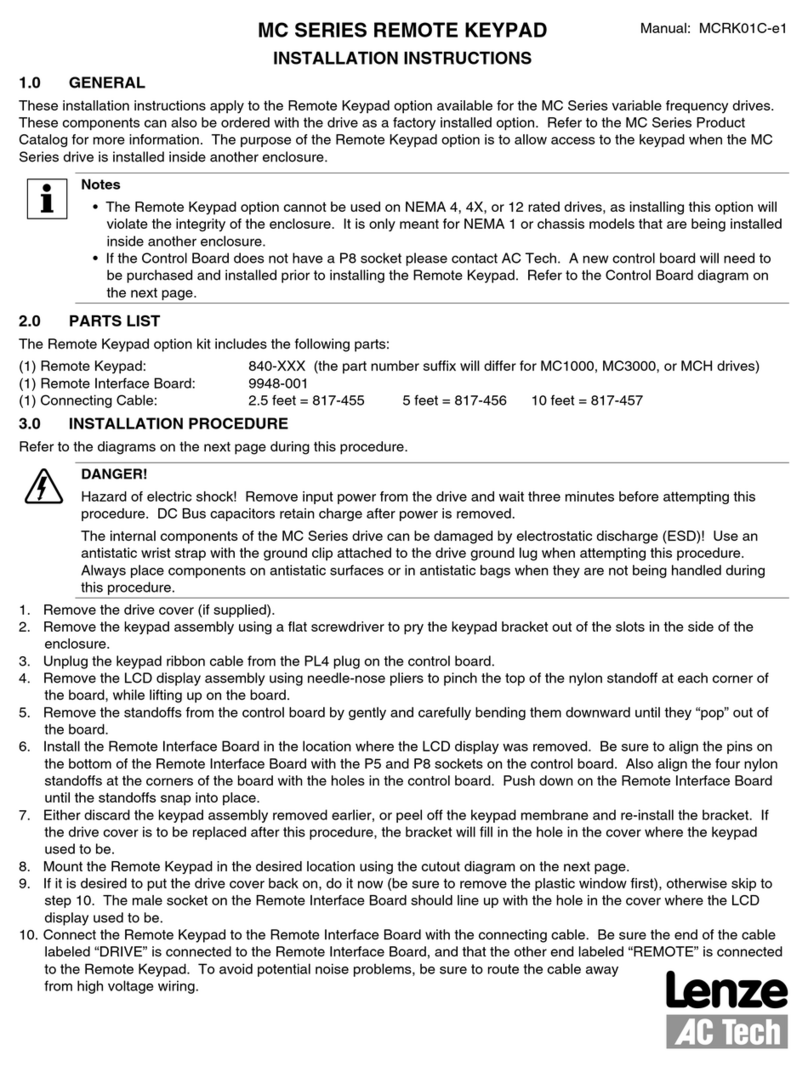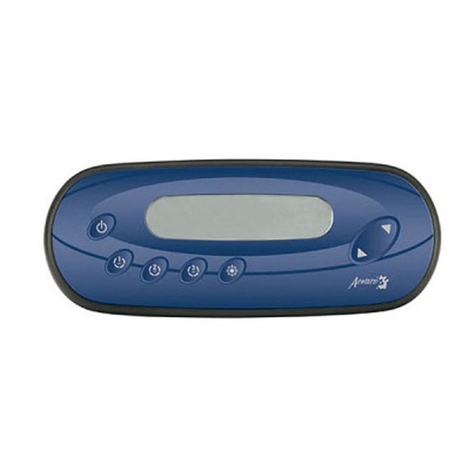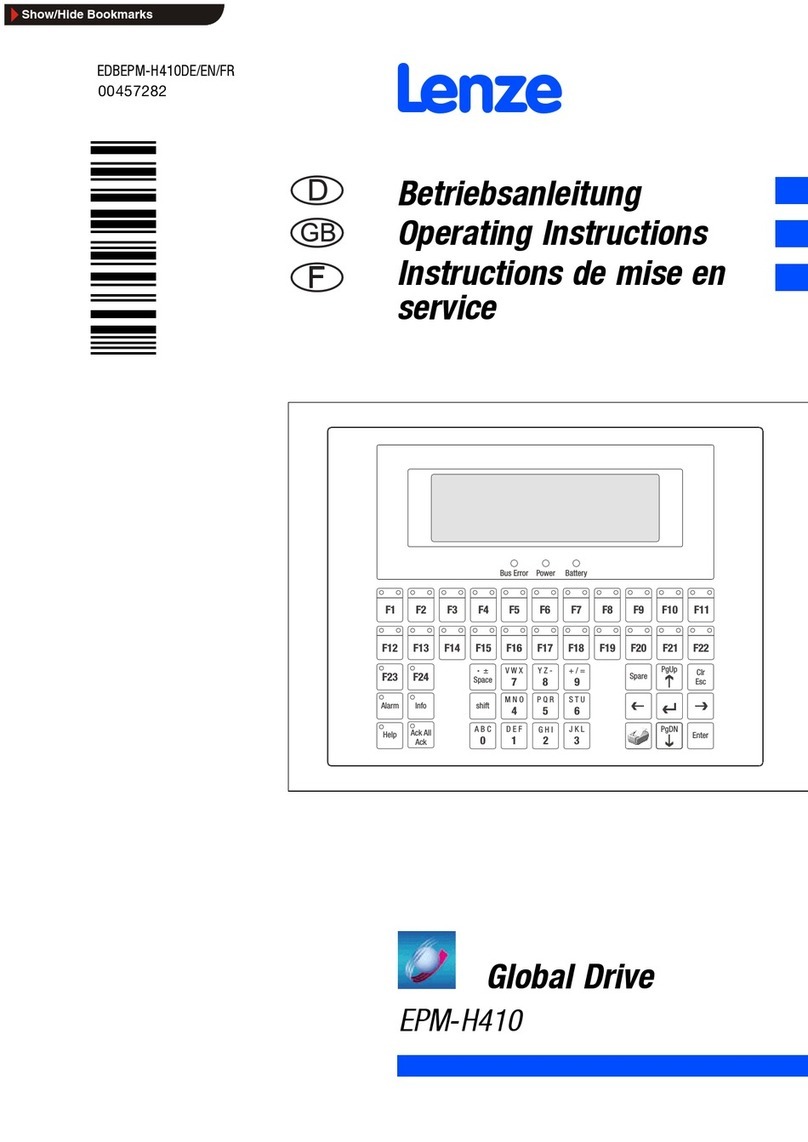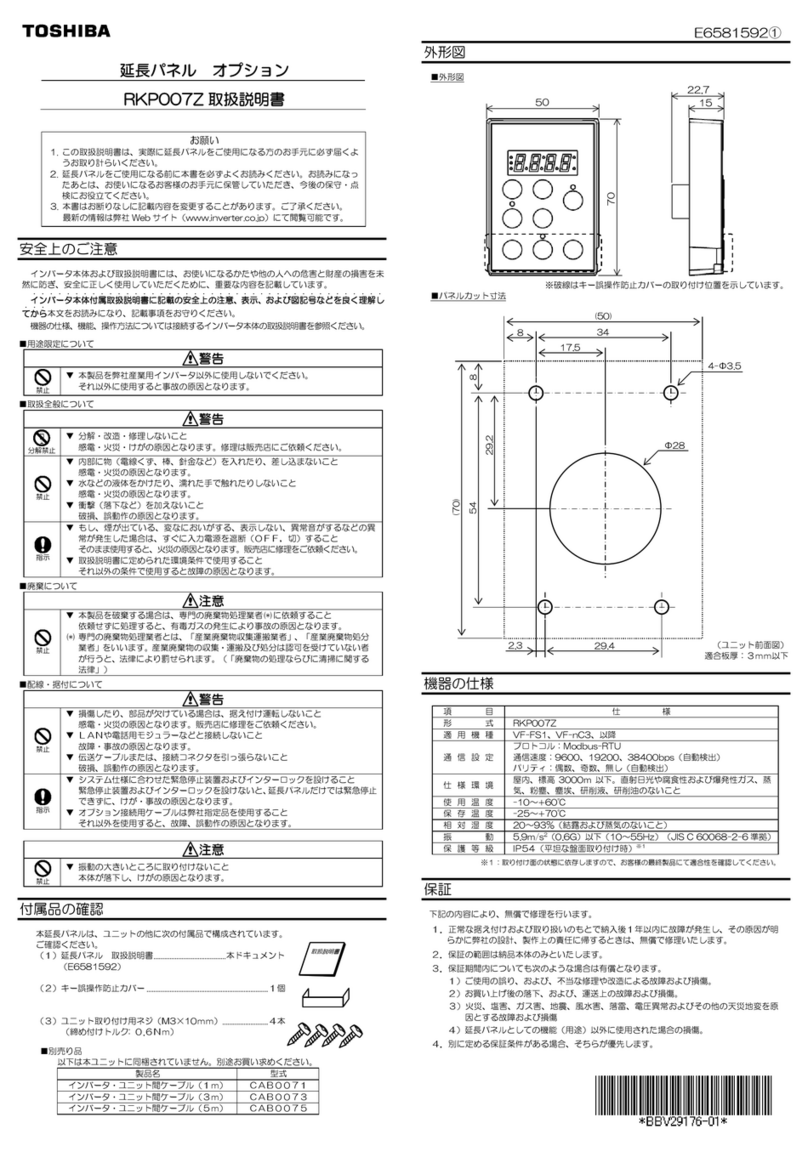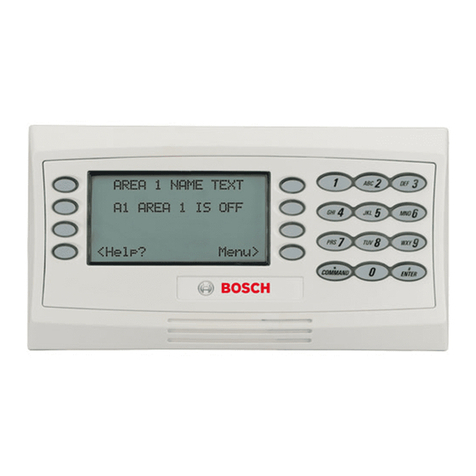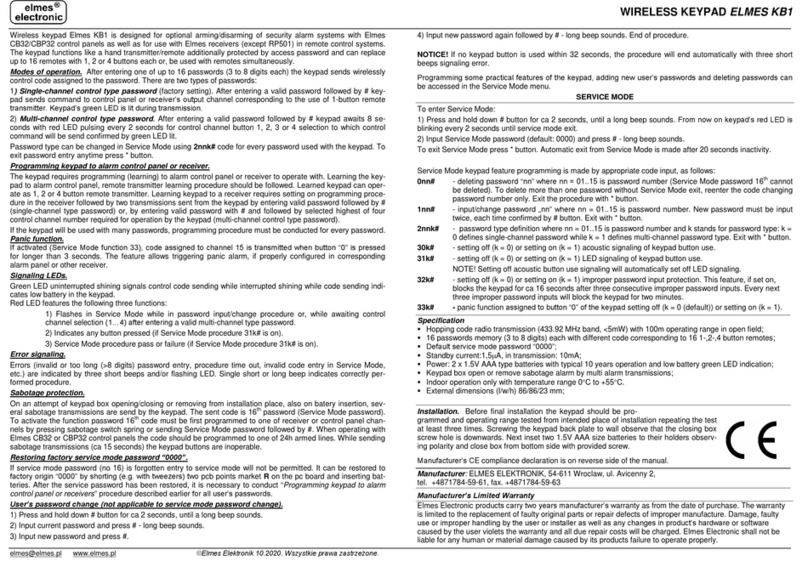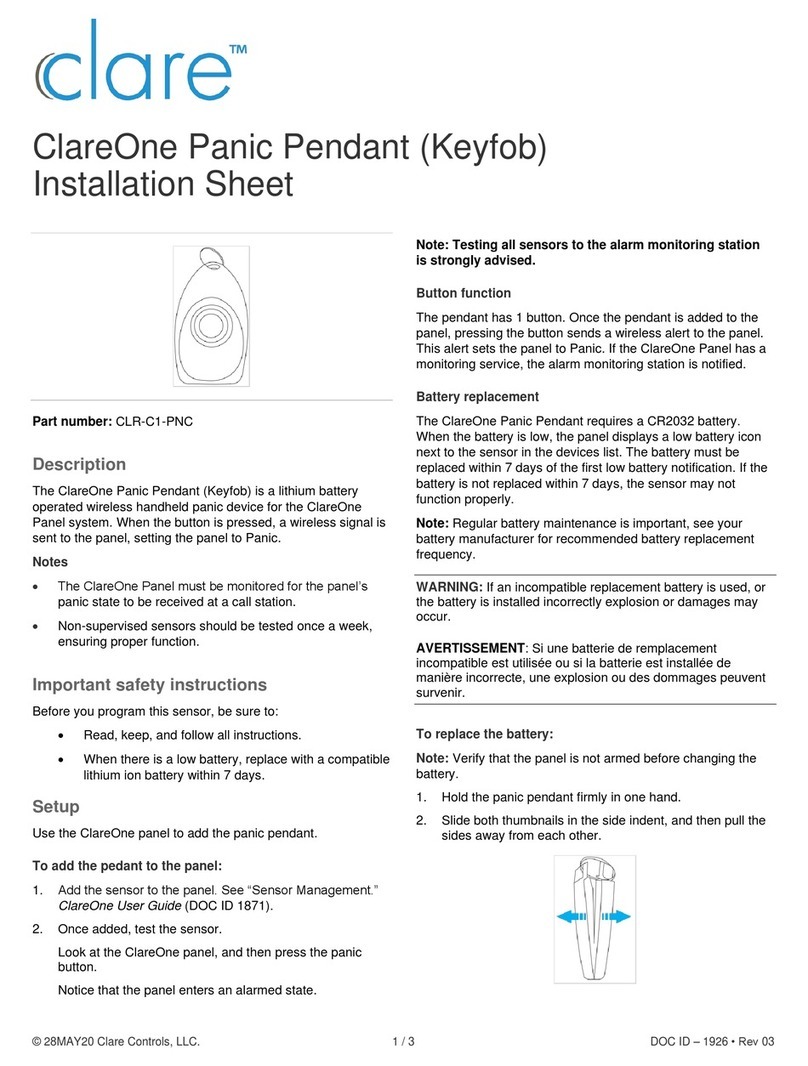
SATEL INT-SCR-BL4
5. Operation in the Partition Keypad Mode
The LEDs show following information:
off when alarm is cleared.
ALARM
(red color) – steady light indicates an alarm in the
blinking indicates that an alarm was triggered in the partitio
keypad controlled partition, while
n (alarm memory). The LED goes
ARMED
(green color) – steady light indicates that the partition to which the keypad is assigned
has been armed. Blinking indicates countdown of the exit delay.
TROUBLE
(yellow color) – blinking indicates that a technical problem has occurred.
e LCD keypad. Arming the
Note:
Informa keypad can be found in the user manuals of the control panels.
ICE MODE
Lo in the LCD keypad – its activation provides access to the Lock
Lo
X
)/Lock feature (
D
LOAD
64
) – its activation provides access to the lock feature options.
ac vice (e.g. electromagnetic door lock) by means of the partition keypad. This
entering the CODE and pressing the
The
signaling applies to troubles from the entire alarm system, not only from the keypad
controlled partition. The type of trouble can be checked on th
keypad controlled partition will disable the trouble signaling. Disarming the partition will
restore the trouble signaling.
All LEDs may be OFF in the arming mode, depending on the control panel settings.
tion on the use of the partition
The partition keypad can be programmed by means of the LCD keypad (
S
ERV
S
H
E
S
expander selection) or a computer with
TRUCTURE ARDWARE XPANDERS ETTINGS
the
D
LOAD
X
/
D
LOAD
64
program. Described below are settings and options available for programming
Abbreviations from the LCD keypad display are shown at some of the functions.
Name – option to give an individual (16-character) name to the module. This option can be accessed
in the LCD keypad as follows:
S
ERVICE MODE
S
TRUCTURE
H
ARDWARE
E
XPANDERS
N
AMES
expander selection.
Partition – assignment of the keypad to a partition selected from the list. The keypad controls this
partition.
ck feature – the option available
submenu.
ck (
D
LOAD
The options „Lock feature” (LCD / DLOAD64) and „Lock” (DLOADX) refer to support of the
tuating de
function is made available to any user authorized to use the keypad (see:
M
ASTER USERS
/U
SERS
function). Control is effected by means of the relay.
Lock features (
D
LOAD
X
)/Lock (
D
LOAD
64
)
ON if partition armed – the relay is active when the partition is armed, and inactive when the
partition is disarmed.
Note: When operating in this mode the relay will change its state automatically, if the partition is
disarmed from the given keypad. When the partition is disarmed from another keypad,
the state of the relay will change on key on the
Fixed O
given partition keypad.
N time [ON time] – after the user enters the CODE and presses the key, the relay will
ctive for the R
ELAY
ON
TIME
.be a
Fixed ON time – OFF if door open [ON, openoff] – after the user enters the CODE and presses
the key, the relay will be active until the door is opened (the door st us control input is
isolated from the common ground
at
), however not longer than for the
R
ELAY
ON
TIME
.
Fixed ON time – OFF if door closed [ON, closeoff] – after the user enters the CODE and
presses the key, the relay will be active until the door is closed (the door status control input
is shorted again to the common ground), however not longer than for the
R
ELAY
ON
TIME
.
Re
be s
lay ON time – the time period during which the relay is active. Duration of the „relay ON time” can
from 1to 255 econds.

